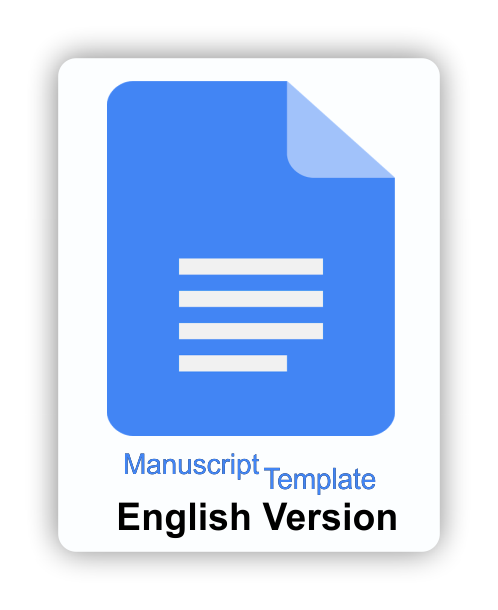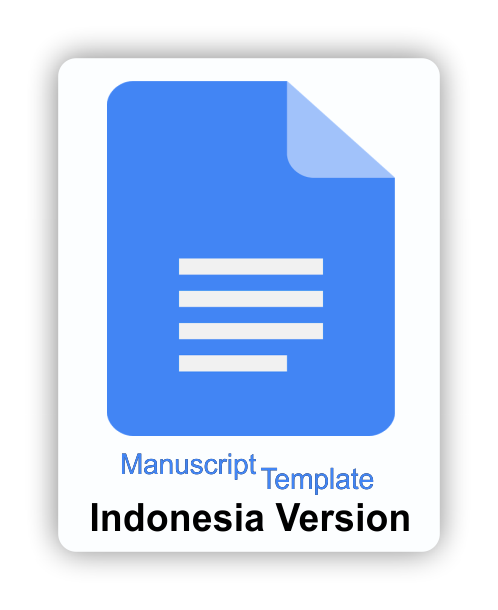Persepsi dan pengembangan peta kognitif mahasiswa dalam blended learning
Abstract
Tujuan dari artikel ini adalah untuk merefleksikan manfaat perkuliahaan perkembangan anak berkebutuhan khusus melalui perkuliahaan blended learning dari aspek persepsi secara kuantitatif dan peningkatan peta kognitif secara kualitatif. Metode penelitian dengan angket dari respon mahasiswa secara kuantitatif, sedangkan peta kognitif diambil secara kualitatif terhadap fakta refleksi mahasiswa dalam mendalami materi kuliah. Respon angket meliputi sangat sesuai, sesuai, dan tidak sesuai terhadap komponen-komponen substansi perkuliahaan. Analisis data menggunakan persentase bagi data kuantitatif dan kategorial peta kognitif pada data kualitatif. Hasil diperoleh bahwa pada waktu kuantitatif persepsi mahasiswa dalam kondisi stabil, namun fakta peta kognitif secara kualitatif terjadi perubahan meningkat secara bervariasi. Dari sebelas mahasiswa peserta kuliah perkembangan anak berkebutuhan khusus ketika respon terhadap kesesuaian materi kuliah dengan capaian pembelajaran sebelum dam sesudah blended learning ternyata stabil. Peningkatan peta kognitif pada refleksi materi perkuliahaan sebelum dan sesudah blended learning bervariasi tergantung minat dan ketertarikan mahasiswa pada masing-masing komponen dari substansi perkuliahaan. Jadi, mata kuliah perkembangan anak berkebutuhan khusus bermanfaat bagi pencapaian profil lulusan.
Perception and development of cognitive map's student through blended learning
Abstract
The purpose of the article reflects the benefits of lecturing on the development of children with special needs through blended learning from quantitative aspects of perception and improving cognitive maps qualitatively. The research method with a questionnaire from the students' responses quantitatively, while the cognitive map is taken qualitatively to the fact of student reflection in studying lecture material. The questionnaire response includes very suitable, appropriate, and incompatible with the components of the lecture substance. Next, they were asked to reflect descriptively about the contents of the material in each lecture component. Data analysis uses percentages for quantitative and categorical cognitive map data on qualitative data. The results obtained that in quantitative time the perceptions of students are in a stable condition, but the facts of cognitive maps qualitatively change changes vary. Of the 11 (eleven) students participating in the development of children with special needs when the response to the suitability of the course material with learning outcomes before the dam after blended learning turned out to be stable. Increasing cognitive maps on reflection of lecture material before and after blended learning varies depending on student interest and interest in each component of the lecture substance. So, the developmental course of children with special needs is useful for achieving graduate profiles.
Keywords
Full Text:
PDFReferences
Berns, R.M. (2012).Child, family, school, community. 9ed. Belmont. Wadsworth: Cengange Learning
Berk, L.E. (2004). Infants, children, and adolescent.6ed Boston: by Pearson Education.
Creswell, J. W. (2014). Research design qualitative, quantitative, and mixed methods approached, 4th edition. Los Angeles: Sage.
Dunlap., L.L (2009). An introduction early childhood education. New Jersey: by Pearson Education.
Dziuban, C., Graham, C. R., Moskal, P. D., Norberg, A., & Sicilia, N. (2018). Blended learning : the new normal and emerging technologies, 1–16. https://doi.org/10.1186/s41239-017-0087-5.
Eppich, W. (2015). Promoting Excellence and Reflective Learning in Simulation ( PEARLS ), 00(00), 1–10. https://doi.org/10.1097/SIH.0000000000000072.
Gage, N. L., Ing, E. A. R., & David, A. A. N. O. (n.d.). AXO OMY.
Gros, B., Suárez-guerrero, C., & Anderson, T. (2016). The Internet and Online Pedagogy Editorial. International Journal of Educational Technology in Higher Education, 37–38. https://doi.org/10.1186/s41239-016-0037-7.
Hess, R., Hagemeier, N. E., Blackwelder, R., & Rose, D. (2016). Teaching Communication Skills to Medical and Pharmacy Students Through a Blended Learning Course, 80(4).
Margolis, A. R., Porter, A. L., & Pitterle, M. E. (2017). Best Practices for Use of Blended Learning, 81(3).
Marrinan, H., Firth, S., Hipgrave, D., & Jimenez-soto, E. (2015). Perspective Let ’ s Take it to the Clouds : The Potential of Educational Innovations , Including Blended Learning , for Capacity Building in Developing Countries, 4(9), 571–573. https://doi.org/10.15171/ijhpm.2015.121
Montello, D. R. (2002). Cognitive Map-Design Research in the Twentieth Century: Theoretical and Empirical Approaches, 29(3), 283–304.
Pedagogy, M., & Path, A. (2015). Hybrid and Blended Learning, 59(October), 137–140. https://doi.org/10.1002/jaal.463
Sajid, M. R., Laheji, A. F., Abothenain, F., Salam, Y., & Aljayar, D. (2016). Can blended learning and the flipped classroom improve student learning and satisfaction in Saudi Arabia ?, 281–285. https://doi.org/10.5116/ijme.57a7.83d4San, Á., Alonso, M., & García, Á. (2016). Pedagogic dilemmas to flows of knowledge in the age of digital technology. International Journal of Educational Technology in Higher Education, 1–9. https://doi.org/10.1186/s41239-016-0030-1
Shantakumari, N., & Sajith, P. (2015). Blended Learning : The Student Viewpoint, 5(5), 323–328.
Wang, Y., Han, X., & Yang, J. (2015). Revisiting the Blended Learning Literature : Using a Complex Adaptive Systems Framework, 18, 380–393.
Yechiam, E., Busemeyer, J. R., Stout, J. C., & Bechara, A. (2005). Using Cognitive Models to Map Relations Between Neuropsychological Disorders and Human Decision-Making Deficits, 16(12), 973–978.
The Yanto H. & Alawiyah S., (2019) . Evaluasi Pelaksanaan Co-teaching Blended Learning Bahasa Inggris Bidang Kewarnegaraan. Jurnal Inovasi Teknologi Pendidikan. 6(1). 14-28 Permalink/DOI: http://dx.doi.org/10.21831/jitp.v6.1.19701
DOI: https://doi.org/10.21831/jitp.v8i2.25787
Refbacks
- There are currently no refbacks.
Copyright (c) 2021 Mumpuniarti Mumpuniarti

This work is licensed under a Creative Commons Attribution-ShareAlike 4.0 International License.
Our journal indexed by:
View Journal Statistics


















.png)